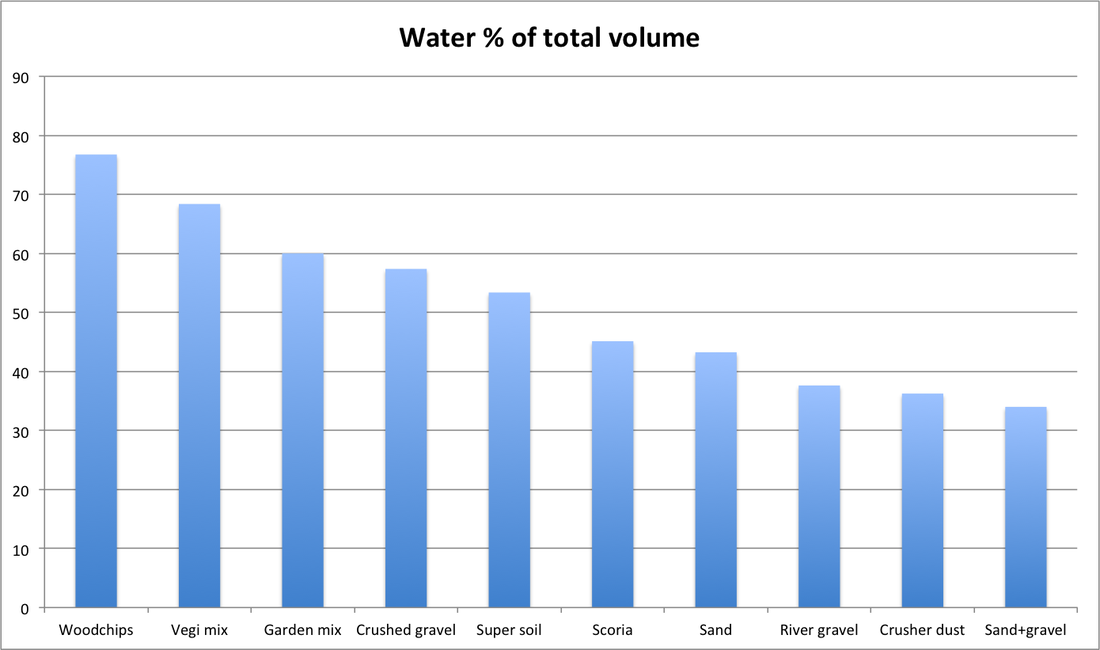 The material in the reservoir layer needs to do two things. The first is to wick water up into the growing media. The ability of various materials to do this was discussed in an earlier blog post. The second is to provide enough spaces between the particles to store a reasonable amount of water. The more water that is stored, the longer you can go before you have to add more water to the wicking bed. The graph shows how much water each material can hold, as a percentage of the volume of the material. I measured this by filling a container of a known volume with the material, then adding water until it came to the top of the container, level with the top of the material. I measured the amount of water added. The most water was held in woodchips and the coarser two soil mixes, but these materials would probably be more compacted when used in a wicking bed and thus probably hold less water. Of the traditional reservoir materials, the 10mm crushed gravel held the most water (57%), followed by scoria (45%) and sand (43%). For the water holding capacity criteria, 10mm crushed gravel would seem to be the best material to choose. But the capillary rise tests showed that gravel has very limited wicking capability compared to sand so, although sand will hold less water, I suspect it will prove a better material in the reservoir of a wicking bed. I will test this in a future experiment when I build wicking beds with various reservoir materials and measure the moisture movement through them.
3 Comments
Natasha
7/12/2019 12:07:56 pm
Hi Chris. I have read your research proposal and I will be keen to see your results. I'm in Perth. Just starting a new garden. I'm ready to set up some ibc wicking beds. Now i know your not finished. But if you were setting something up today. With your current knowledge. What would you do? Can you share any ideas?
Reply
Alex Cokic
30/3/2022 12:04:23 pm
Hi Chris
Reply
Chris
30/3/2022 06:14:31 pm
Hi Alex,
Reply
Your comment will be posted after it is approved.
Leave a Reply. |
Blog writer
Chris is exploring how wicking beds work for a Charles Sturt University honours project. This blog reports on the findings of this original research. Archives
July 2022
Categories |
 RSS Feed
RSS Feed